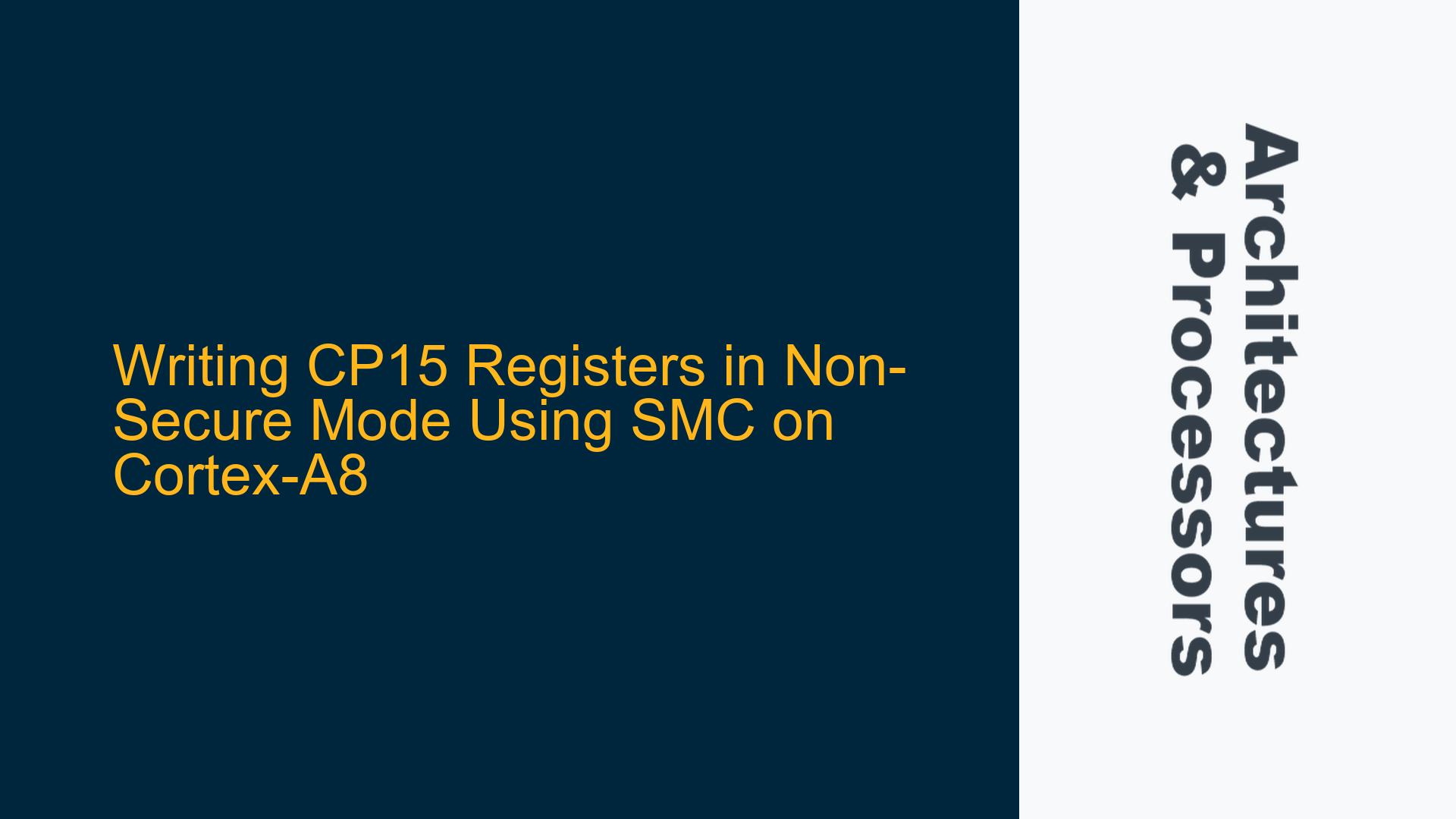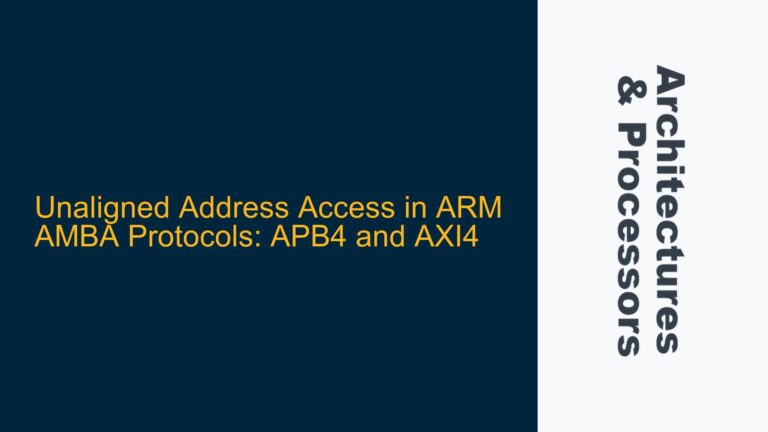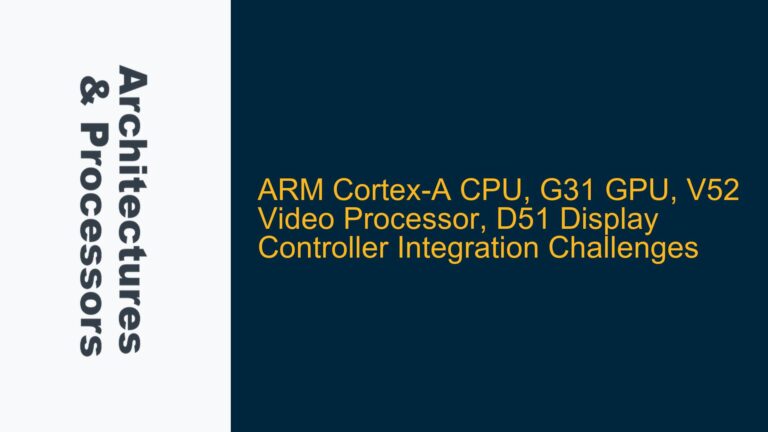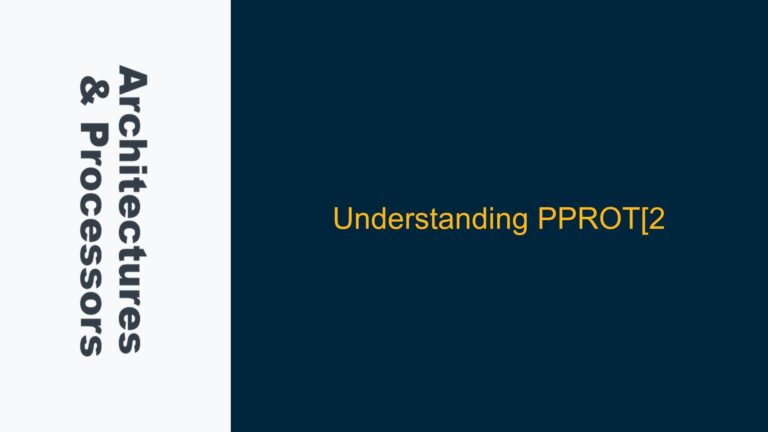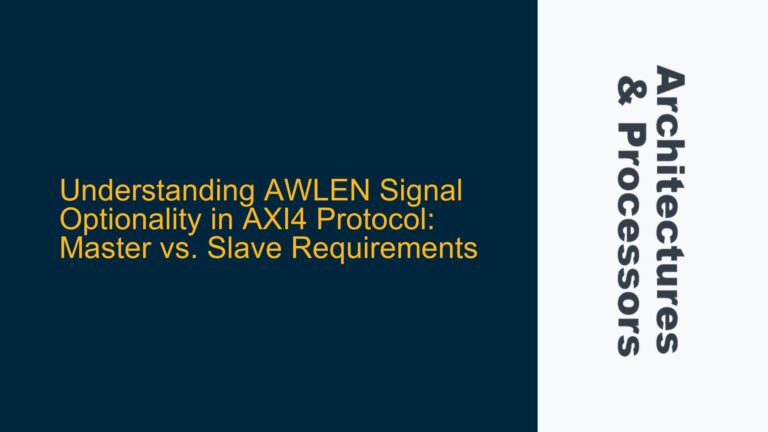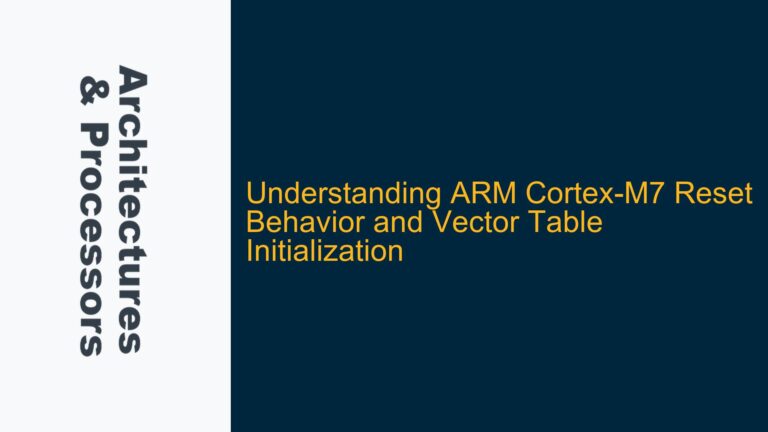Secure vs. Non-Secure Mode Access to CP15 Registers (CRn:C15)
The ARM Cortex-A8 processor, like many ARM architectures, implements a security model that divides the execution environment into Secure and Non-Secure modes. This separation is critical for ensuring that sensitive operations and registers are protected from unauthorized access. Among these protected resources are certain CP15 registers, specifically those with CRn:C15, which are writeable only in Secure mode. CP15, also known as the System Control Coprocessor, is responsible for managing critical system configurations such as cache, memory management, and other low-level operations.
In Non-Secure mode, direct access to these registers is restricted to prevent potential security breaches or system instability. However, there are legitimate scenarios where Non-Secure software might need to modify these registers, such as configuring performance monitoring or debugging features. To address this, ARM provides a mechanism called the Secure Monitor Call (SMC) instruction, which allows Non-Secure software to request Secure mode services.
The challenge lies in implementing this mechanism correctly. The Cortex-A8 Technical Reference Manual (TRM) mentions the SMC instruction but does not provide detailed implementation guidance. This post will explore the issue in depth, covering the architectural constraints, potential pitfalls, and a step-by-step guide to implementing SMC-based register writes.
SMC Instruction and Secure Firmware Requirements
The SMC instruction is the gateway for Non-Secure software to access Secure mode functionality. When executed, the SMC instruction triggers an exception that transitions the processor to Secure mode, where a Secure Monitor handler can process the request. However, this mechanism requires careful coordination between the Non-Secure and Secure environments.
First, the Secure firmware must be designed to handle SMC requests. This involves setting up a Secure Monitor handler that can interpret the SMC request, perform the necessary operations (such as writing to CP15 registers), and return control to the Non-Secure environment. The handler must also ensure that the security of the system is not compromised during this process.
Second, the Non-Secure software must prepare the SMC request correctly. This includes setting up the appropriate parameters, such as the register address and the value to be written, and ensuring that the SMC instruction is executed with the correct conditions. Missteps in this process can lead to undefined behavior, security vulnerabilities, or system crashes.
The relationship between the Non-Secure software, the SMC instruction, and the Secure firmware is intricate. The Non-Secure software initiates the request, but the Secure firmware is responsible for validating and executing it. This separation of responsibilities is fundamental to the ARM security model but adds complexity to the implementation.
Implementing SMC-Based CP15 Register Writes in Non-Secure Mode
To implement SMC-based CP15 register writes in Non-Secure mode, follow these steps:
-
Set Up the Secure Monitor Handler: The Secure firmware must include a handler for SMC exceptions. This handler should be registered during the initialization of the Secure environment. The handler must be capable of decoding the SMC request, determining the target register and value, and performing the write operation. It should also validate the request to ensure it does not compromise system security.
-
Define the SMC Interface: Establish a clear interface between the Non-Secure software and the Secure firmware. This interface should define the format of the SMC request, including the register address, the value to be written, and any additional parameters. The interface should also specify the return values or status codes that the Secure firmware will provide.
-
Prepare the SMC Request in Non-Secure Mode: Before executing the SMC instruction, the Non-Secure software must prepare the request according to the defined interface. This involves loading the register address and value into the appropriate registers and ensuring that the SMC instruction is executed with the correct conditions. For example, the SMC instruction should be executed in a privileged mode, and the parameters should be validated to prevent invalid requests.
-
Execute the SMC Instruction: Once the request is prepared, the Non-Secure software can execute the SMC instruction. This will trigger an exception, transitioning the processor to Secure mode and invoking the Secure Monitor handler.
-
Handle the SMC Request in Secure Mode: The Secure Monitor handler should decode the request, validate it, and perform the write operation on the CP15 register. After completing the operation, the handler should return control to the Non-Secure environment, providing any necessary status codes or return values.
-
Verify the Operation: After the SMC instruction completes, the Non-Secure software should verify that the operation was successful. This may involve reading back the register value or checking the status code returned by the Secure firmware.
Example Code Snippets
Below are example code snippets illustrating the implementation of SMC-based CP15 register writes. These snippets assume a basic understanding of ARM assembly and the Cortex-A8 architecture.
Secure Monitor Handler (Secure Firmware)
Secure_Monitor_Handler:
; Save context
PUSH {r0-r12, lr}
; Decode the SMC request
LDR r0, [lr, #-4] ; Load the SMC instruction
AND r0, r0, #0xFF ; Extract the function identifier
; Validate the request
CMP r0, #SMC_FUNC_WRITE_CP15
BNE invalid_request
; Perform the CP15 register write
MCR p15, 0, r1, c15, c0, 0 ; Write to CP15 register (CRn:C15)
; Return to Non-Secure mode
POP {r0-r12, lr}
MOVS pc, lr
invalid_request:
; Handle invalid requests
POP {r0-r12, lr}
MOVS pc, lr
Non-Secure Software (SMC Request)
; Prepare the SMC request
MOV r0, #SMC_FUNC_WRITE_CP15 ; Function identifier
MOV r1, #0x12345678 ; Value to write
MOV r2, #0xC15 ; CP15 register (CRn:C15)
; Execute the SMC instruction
SMC #0
; Verify the operation
; (Optional: Read back the register value or check status codes)
Key Considerations
- Security: The Secure Monitor handler must validate all SMC requests to prevent unauthorized access or malicious behavior. This includes checking the function identifier, register address, and value.
- Performance: Frequent use of SMC instructions can impact system performance due to the context switch between Secure and Non-Secure modes. Optimize the SMC interface to minimize overhead.
- Debugging: Debugging SMC-based operations can be challenging due to the separation between Secure and Non-Secure environments. Use logging or debugging tools to trace the flow of execution.
By following these steps and considerations, you can successfully implement SMC-based CP15 register writes in Non-Secure mode on the Cortex-A8 processor. This approach ensures compliance with the ARM security model while providing the flexibility needed for advanced system configurations.
